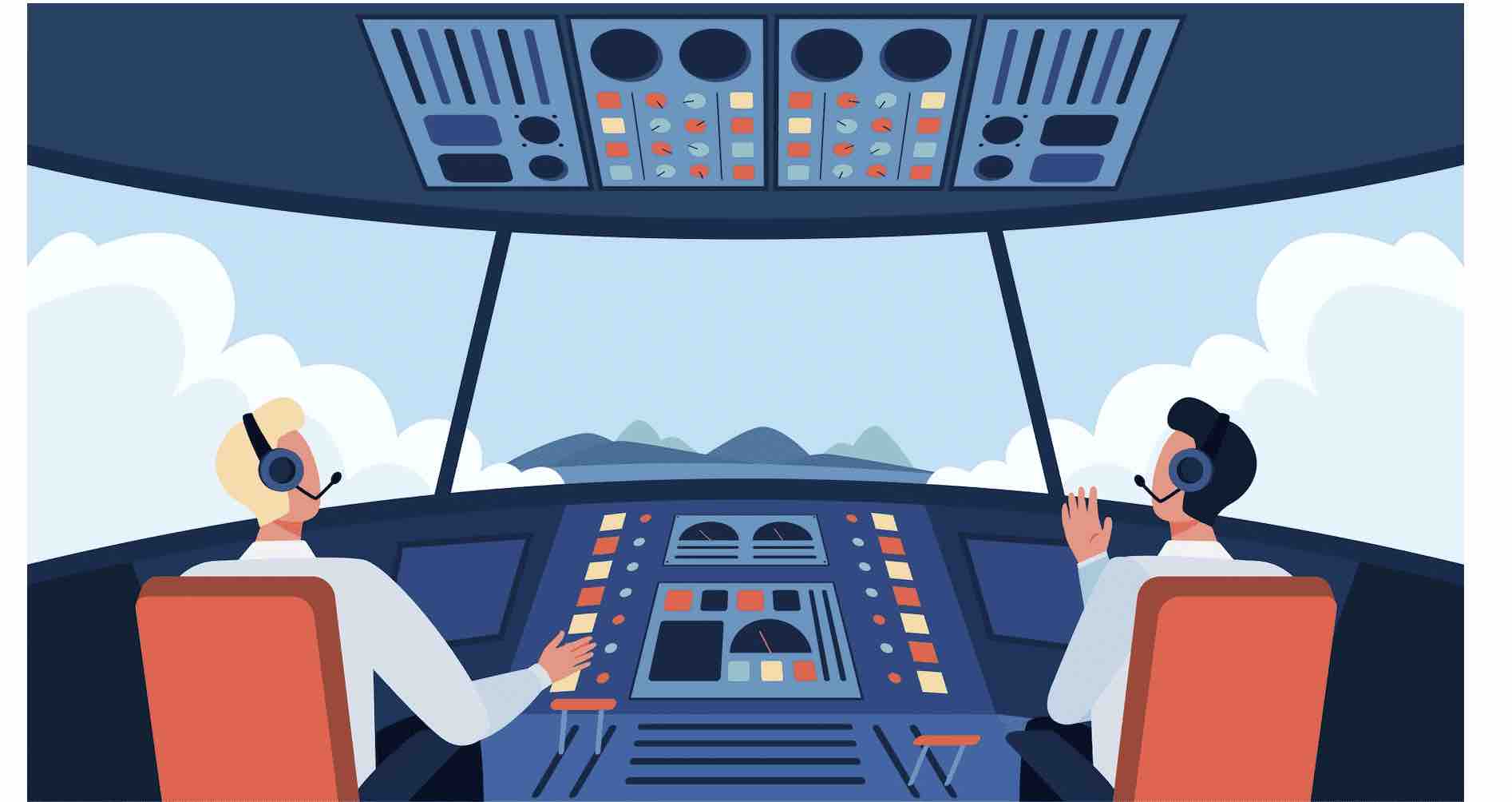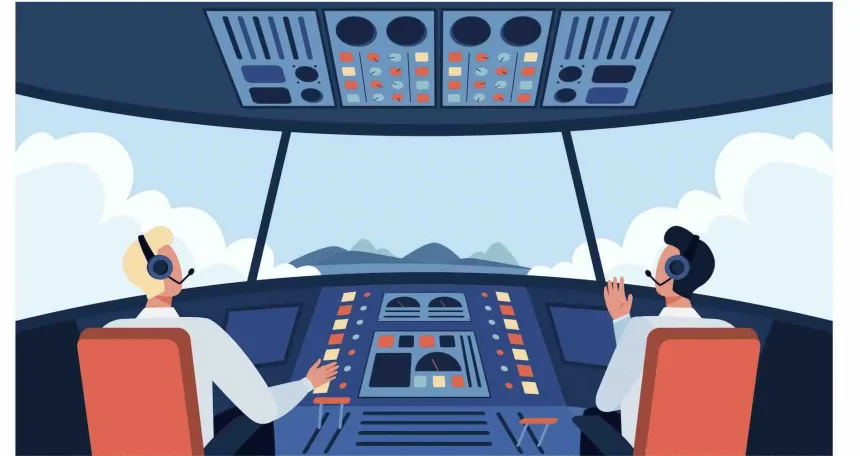
Introduction
The field of artificial intelligence has made tremendous strides in the sector of autonomous vehicles. We now have fully functional prototypes of level 4 self-driving cars, and robot-assisted vehicle control is rapidly becoming a reality. This trend seems to have set its sights on the aviation industry. There is increased speculation about the possibility of replacing human pilots with robots or AI.
The U.S. military already has autonomous drones capable of taking off, completing mission objectives, and landing without a human pilot. But what about commercial aircraft? Could a robot or AI actually replace the role of a human pilot? This blog post will discuss the current state of AI in the aviation industry and evaluate its potential impact.
Also Read: Artificial Intelligence and Air Travel
AI in the Aviation Industry
Innovative airlines have already begun implementing AI solutions at various stages of their operations. As such, autonomous aircraft aren’t the only way AI can be employed in the aviation industry.
Here are some of the most common uses of AI in aviation today:
Flight Engineers and Pilots
Aircraft systems are notoriously complex. Diagnosing malfunctions requires a thorough understanding of the aircraft’s design and systems. Flight engineers are currently human operators who handle a cascade of emergency messages. They resolve any issues that arise. With machine learning, AI could be used to detect and accurately diagnose problems in the aircraft’s systems. This would allow a pilot or flight engineer to quickly identify and address technical issues without having to wait for manual confirmation from ground personnel.
As for the in-cockpit automation system, AI-driven autopilot is already a reality. The airplane is now able to monitor and control the plane’s speed, altitude, and other parameters with near-perfect precision – all without human intervention. However, a single pilot must take off, land, and operate flight controls during turbulent conditions. Should the pilot be incapacitated, a co-pilot is present to complete the flight safely.
In the future, we might see a single-pilot operation model that is fully automated with the assistance of pilot AI. Currently, any autonomous pilot would lack the emotional intelligence to make decisions on the fly, and any failures in judgment could have dire consequences.
Air Traffic Control
Another crucial component of aircraft control is ATC. A manned aircraft typically relies on a series of beacons and radio signals for navigation. An operator must monitor the applicable airspace to ensure no collisions happen. Computer-driven flight automation systems can be used to replace manual guidance that air traffic controllers typically provide. However, an autonomous plane would have to hand over control to pilots in more densely populated, busy airspace.
The autonomous flight plan must also account for ever-changing weather conditions. It must ensure the aircraft reaches its destination safely and efficiently. AI technologies, such as deep learning, can be used to build multi-sensory models that predict weather patterns. It can then suggest the best route for a flight.
Companies like Airspace Intelligence are already developing decision-making models that can predict airspace dynamics to recommend the best route for a flight. This technology can save pilots time, eliminating the need to manually look up which route is best for the given flight.
Customer Service Agents
The integration of AI in the aviation industry isn’t all about performance. There’s a certain cost benefit associated with the automation of customer service activities. AI-driven chatbots can help passengers quickly and accurately answer queries about flight booking, delays, baggage tracking, and more.
Highly targeted and personalized marketing campaigns can also be run. AI-driven technologies make it easier to identify and cater to customer preferences. This helps airlines create more personalized experiences that increase revenue and customer loyalty.
As for onboard service, we can expect to see an AI aircrew labor in-cockpit automation system in the foreseeable future. AI bots could help with mundane tasks such as serving food and beverages, taking orders, or providing guidance on the plane’s amenities. The pre-flight safety demonstration could also be automated. Picture a robot providing passengers with a more engaging experience.
Check-In
Anyone who’s been on a busy commercial flight knows the pain of waiting in line at the check-in desk. AI can help alleviate this issue by automating the entire process. An AI system integrated into the flight bookings engine would allow passengers to select their seats, check-in baggage, and board with minimum hassle. Biometric data (such as facial recognition) can be used to swiftly and securely verify identities.
At the airport, automated check-in kiosks are already being used in some parts of the world. They provide a more efficient way for passengers to handle their travel documents, with minimal input from human workers. Autonomous operations like these tend to reduce flight delays and long queues, making them a viable option for airports.
The remaining airline personnel could then be reallocated to other tasks.
Baggage Screening
Next, autonomous technology can be used to address the issue of baggage screening. We often forget how crucial this element is to airport security. But the current manual operation is too slow and inefficient for larger airports. Both carry-on and checked baggage can be scanned for threats using autonomous robots.
The machines are equipped with sensors that help identify guns, explosives, and other illegal objects. They may also be able to “read” X-rays or CT scans of passengers’ bags and automatically flag any anomalies. This task is usually carried out by security personnel, making it not only time-consuming but also prone to human error.
Less-skilled workers can get tired at the end of their shifts. They might miss potential threats that the robots could have easily detected. In addition, baggage screening is often a laborious process for passengers. With automated systems in place, waiting times can be dramatically reduced.
Predictive Maintenance
Before we can enjoy pilotless planes, we must ensure the vehicles are safe to fly. Every time there are deadly crashes, such as the Boeing 737 MAX tragedies in 2018/2019, the airline industry is put under intense scrutiny. After all, the lives of passengers depend on the maintenance and reliability of aircraft.
AI can help address this concern by providing a way to continuously monitor planes’ health. It can predict potential problems before they happen. AI can detect abnormalities and alert the crew and maintenance staff by collecting data on engine performance and other critical aircraft systems. Industrial robots can then execute the necessary repairs and adjustments. That should eventually reduce the chance of an accident. This technology could also reduce the time it takes to check a plane’s status before take-off.
What is the risk of automation?
Any aviation program manager will tell you that the aviation sector is highly regulated and risk-averse. Thus, the idea of automation may be particularly intimidating. Airline companies would surely like to save on costs like pilot salaries and maintenance. However, human contributions are still essential in aviation. Perhaps the situation will evolve into something similar to drone pilots, who still need to oversee drone operations.
Yet, the exposure to automation has already started to take effect. Pilots must now learn how to interact and collaborate with machines. Other sectors, such as cabin crew and ground staff, may face automation too. There’s no telling how soon these effects on the labor market will become visible. But there’s no doubt that the industry will have to face a different landscape in the coming years.
How close is AI to replacing the human pilot?
It’s worth noting that pilots are probably the furthest from being replaced by AI. First, countless legal, regulatory, and safety requirements need to be met. New laws would have to be written and tested to allow AI-controlled aircraft, which could take many years. Then, there is public perception to consider.
Many passengers may not feel comfortable boarding an aircraft operated by AI, so changes must be made to gain acceptance. Finally, there is the cost factor. Pilots are expensive, but buying and maintaining a fleet of AI-controlled planes would require significant upfront investments that most companies cannot afford.
What we are most likely to see soon is a co-pilot AI. AI Co pilot would leverage the recent advances in sensor technology, machine learning, and natural language processing to provide real-time navigation advice and assistance to the pilot. One of the goals of automation is to free up the pilot’s attention and increase safety, so having an AI co-pilot can be beneficial in this regard.
Drawbacks of AI in aviation
Although the autonomous taxi sounds like a dream come true, many drawbacks still exist. Without a pilot on board, passengers would need to trust AI to make the right decisions in any given situation. However, even the most advanced AI technology is susceptible to being hacked, damaged, or malfunctioning. Without human intervention, a problem that could have been solved by a pilot could turn into a disaster.
Hundreds of millions of dollars have been poured into developing autonomous aircraft, which could potentially raise the cost of air travel and make it unaffordable for the average airline passenger.




